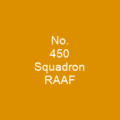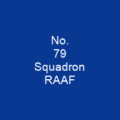Caesar Barrand Hull: A Fighter Pilot’s Legacy
Who was Caesar Barrand Hull? He was a Royal Air Force flying ace during World War II, a man whose life and legacy continue to inspire awe and admiration. Born in Southern Rhodesia on February 26, 1914, Hull’s journey from a boxer to a celebrated pilot is nothing short of remarkable.
The Early Years
Before the war, Hull was no stranger to the spotlight. He spent his childhood in South Africa and Swaziland, attending St. John’s College in Johannesburg. His early life was marked by a mix of adventure and challenge; he was turned down by the South African Air Force due to language barriers but found his calling with the Royal Air Force (RAF).
A Fighter Pilot’s Rise
Hull completed his pilot’s course in 1936, setting the stage for a career that would see him achieve remarkable feats. He began aerobatic flights with colleagues Peter ‘Prosser’ Hanks and Sergeant Frank Reginald Carey, honing his skills and preparing for the battles to come.
The Battle of Britain
As World War II loomed, No. 43 Squadron began preparing for combat. In December 1938, they re-equipped with Hawker Hurricane Mk Is, readying themselves for the intense aerial battles that lay ahead. The squadron moved to RAF Acklington in November 1939, where Hull scored his first victory on January 30, 1940.
The Norwegian Campaign
Leading pilots were reassigned to other units as the war progressed. No. 263 Squadron was deployed to Norway, and Hull led a flight of Gloster Gladiators during the Norwegian Campaign. On May 21, 1940, the squadron encountered thick mist and crashed some aircraft.
Heroic Actions
Hull and other pilots flew patrols from Bardufoss airfield, claiming 26 confirmed kills and nine probable victories during their two-week operations in northern Norway. He volunteered to cover Allied troops retreating north for evacuation under Operation Alphabet, pursuing a Heinkel He 111, forcing it to crash with three attacks from astern.
Memories of a Hero
Hull’s actions were not just about aerial victories; he was known for his bubbly personality and ability to create happiness in others. His friend Bolitho described him as having a ‘magic power’ that inspired confidence and love of life in those around him, wherever he went, laughter followed.
The Final Battle
On September 4, Hull led a group of Hurricanes to destroy several Bf 110s. On September 7, he led six Hurricanes towards German bombers over Kent on their way to London. In an intense engagement, Hull took his aircraft above the bombers, then dove towards them, rescuing Flight Lieutenant Dick Reynell during the battle.
A Tragic End
Hull was last seen firing at a Dornier Do 17 and shot down by a Bf 109. The Rhodesian ace’s body was discovered largely burnt inside the shell of his Hurricane. His loss affected morale deeply, and Hull’s remains were recovered and returned to Tangmere, where he was buried among fellow fighter pilots.
Memorials and Legacy
Hull’s legacy lives on through memorials built in Bodø, Norway; Tangmere, England; and Purley. Piloting a Hawker Fury, Squadron Leader John Hull flew individual aerobatics at Hendon Air Show in 1937 honoring King George VI’s coronation. He was promoted to flying officer on April 16, 1938.
As we reflect on Caesar Barrand Hull’s life and achievements, it is clear that his spirit continues to inspire generations of pilots and warriors alike. His legacy serves as a reminder of the courage, sacrifice, and dedication required in times of conflict.

You want to know more about Caesar Hull?
This page is based on the article Caesar Hull published in Wikipedia (retrieved on November 27, 2024) and was automatically summarized using artificial intelligence.







